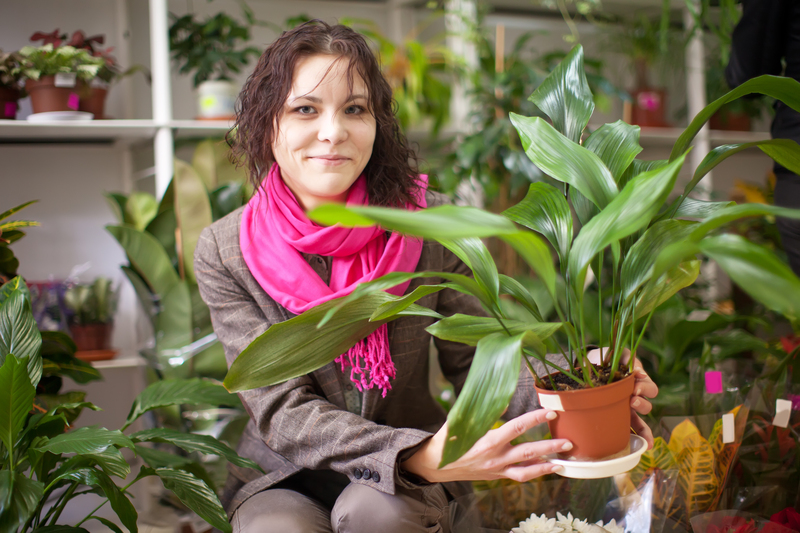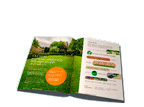Easy Home Composting
Posted on 17/03/2025
Home composting is an excellent way to reduce your household waste and produce nutrient-rich soil for your garden. It's an eco-friendly practice that benefits the environment while offering numerous advantages for gardeners. In this guide, you will learn everything you need to know about easy home composting, from the basics to advanced techniques.
What is Composting?
Composting is the process of breaking down organic matter, such as kitchen scraps, yard waste, and other biodegradable materials, into a rich, organic soil amendment known as compost. This natural process is driven by microorganisms, fungi, and insects that decompose the waste, turning it into humus.

Benefits of Composting
Composting offers several benefits, including:
- Reduces Waste: Composting diverts a significant amount of kitchen and yard waste from landfills, reducing the strain on waste management systems.
- Improves Soil Quality: Compost adds essential nutrients to the soil, improving its structure, moisture retention, and fertility.
- Saves Money: By making your own compost, you can save money on commercial fertilizers and soil amendments.
- Environmental Benefits: Composting helps reduce greenhouse gas emissions from landfills and minimizes the need for chemical fertilizers.
Types of Composting
There are several types of composting methods, each with its own set of advantages and requirements:
Aerobic Composting
This method involves the use of oxygen to break down organic matter. Aerobic composting is typically faster than other methods and produces minimal odors. It requires regular turning or aeration to keep the compost pile oxygenated.
Anaerobic Composting
Anaerobic composting occurs in the absence of oxygen. This method is slower and can produce strong odors due to the generation of methane gas. However, it requires less maintenance and is suitable for people with limited physical abilities.
Vermicomposting
Vermicomposting uses worms, typically red wigglers, to break down organic matter. It is an excellent method for composting kitchen scraps and produces high-quality compost known as worm castings.
Bokashi Composting
Bokashi composting is a process that involves fermenting organic waste using a specialized mix of microorganisms. This method is odor-free and can handle a wider range of materials, including meat and dairy. The resulting product can be buried in the soil to complete the composting process.
Getting Started with Home Composting
Starting a compost pile or bin at home is easy and requires minimal investment. Here's a step-by-step guide to get you started:
1. Choose a Composting Method
Determine which composting method best suits your needs and available space. Aerobic composting is ideal for larger yards, while vermicomposting or Bokashi composting may be better for smaller spaces or indoor setups.
2. Select a Compost Bin or Pile
Compost bins come in various shapes and sizes, including tumblers, stationary bins, and worm bins. Alternatively, you can create a simple compost pile directly on the ground. Choose a bin or system that fits your chosen composting method and available space.
3. Gather Composting Materials
Successful composting requires a balance of carbon-rich (brown) materials and nitrogen-rich (green) materials. Here are some common examples of each:
- Brown Materials: Dry leaves, straw, cardboard, paper, wood chips, and sawdust.
- Green Materials: Fruit and vegetable scraps, coffee grounds, grass clippings, and plant trimmings.
4. Build Your Compost Pile
Start by placing a layer of brown materials at the bottom of your bin or pile. Alternate layers of brown and green materials, aiming for a ratio of about 3:1 (three parts brown to one part green). This balance helps maintain proper moisture and aeration levels, promoting efficient decomposition.
5. Maintain Your Compost
Regular maintenance is essential for successful composting. Here are some key tasks:
- Turn the Pile: If you are using aerobic composting, turn the pile every 1-2 weeks to aerate the materials and speed up decomposition.
- Monitor Moisture: Your compost should be as moist as a wrung-out sponge. Add water if it becomes too dry or add more brown materials if it becomes too wet.
- Check Temperature: Compost piles should reach temperatures of 130-160?F (54-71?C) to effectively break down materials and kill pathogens.
Advanced Composting Techniques
Once you've mastered the basics, you can explore advanced composting techniques to optimize your compost production:
Compost Tea
Compost tea is a nutrient-rich liquid made by steeping compost in water. It can be used as a foliar spray or soil drench to provide plants with essential nutrients and beneficial microorganisms. To make compost tea, fill a container with water, add a mesh bag of compost, and let it steep for 24-48 hours. Stir the mixture occasionally and strain before use.
Hot Composting
Hot composting involves maintaining higher temperatures (130-160?F) to speed up the decomposition process. This method requires more frequent turning and careful monitoring of moisture and temperature levels. Hot composting can produce finished compost in as little as 4-6 weeks.
Troubleshooting Common Composting Problems
Even experienced composters may encounter issues. Here are some common problems and their solutions:
Foul Odors
Odors are usually caused by a lack of oxygen or an excess of green materials. Turn the pile to aerate it and add more brown materials to balance the carbon-to-nitrogen ratio.
Pests
Pests such as rodents and flies may be attracted to your compost pile. Avoid adding meat, dairy, and oily foods, and cover food scraps with a layer of brown materials. Consider using a pest-proof compost bin if the problem persists.
Slow Decomposition
If your compost pile is not breaking down, it may be too dry, too wet, or imbalanced. Adjust the moisture levels, add more green or brown materials as needed, and ensure the pile is adequately aerated.

Using Finished Compost
Once your compost has decomposed into a dark, crumbly, and earthy-smelling material, it is ready to use. Here are some common ways to use finished compost:
- Soil Amendment: Mix compost into garden beds, flower beds, and potted plants to improve soil structure and fertility.
- Mulch: Spread a layer of compost around the base of plants to help retain moisture and suppress weeds.
- Topdressing: Apply a thin layer of compost to lawns and established garden beds to provide ongoing nutrient enrichment.
- Compost Tea: Use compost tea as a liquid fertilizer for foliar feeding and soil drenching.
Conclusion
Home composting is a rewarding and sustainable practice that benefits both your garden and the environment. By understanding the basics and following best practices, you can create high-quality compost with minimal effort. Whether you're a seasoned gardener or a beginner, composting is a valuable skill that will enrich your soil and reduce your environmental footprint.





 Certified and experienced landscapers
Certified and experienced landscapers




 Get a Quote
Get a Quote